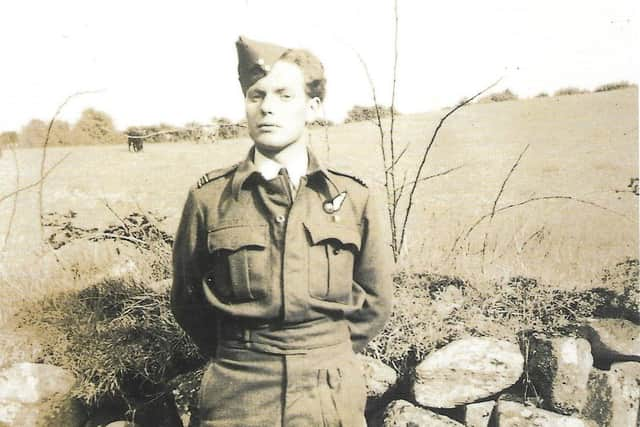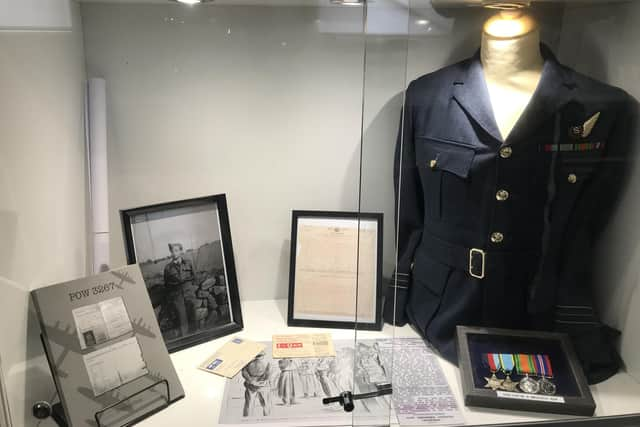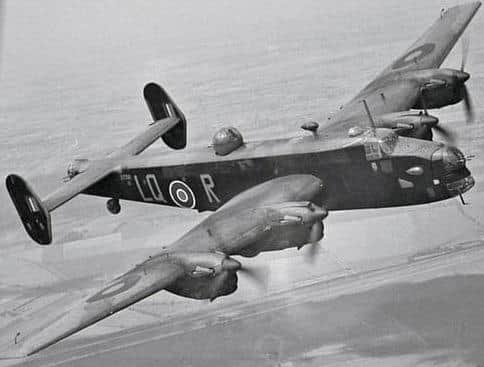Airman’s severely fractured leg ‘just wobbled about at will'
and live on Freeview channel 276
When war ended he joined the RAF’s VIP Squadron and exchanged the deprivation and malnutrition of Stalag Luft III for the lavish comforts of top hotels and cocktail receptions with celebrities like Margot Fonteyn. He was Flight Lieutenant ‘Mac’ McIlroy, commemorated here in January by his son Simon McIlroy, who has written a book about his father.
William Alexander McIlroy was born in 1921 in Leitrim, County Down, a little village near Dromara. After school he intended to join the Post Office as an engineer but trained instead as a wireless operator and air gunner (WOP/AG), and later a pilot, with Bomber Command.
Advertisement
Hide AdAdvertisement
Hide AdSimon’s book, titled ‘POW 3267’, recounts his dad’s harrowing captivity in Stalag Luft III after being shot down over France, and narrates six crash landings, three historic 1,000-bomber attacks over Germany and dozens of other hair-raising bomber raids, leafleting flights and mine laying operations.


The book is available on Kindle and at a small exhibition of Mac’s RAF artifacts at the Ulster Aviation Society’s heritage museum at Maze Long Kesh (www.ulsteraviationsociety.org) now reopened after its winter break.
Mac’s RAF uniform, photographs, medals and POW documents, in a little display cabinet, are a poignant memorial to a local hero who logged over 1,500 hours on WWII bombing missions.
Amongst the Aviation Society’s vast collection of almost 50 civilian and wartime aircraft, countless artefacts and many specialist displays, there’s an original WWII rear gun turret, very similar to the one Mac was in when his plane was shot down.
Advertisement
Hide AdAdvertisement
Hide AdHe rarely spoke about it, but from his own (extremely short - just eight pages) handwritten account, and various official reports, this is what happened on the 15th of April 1943. Mac was part of a massive raid on Stuttgart.


He was rear gunner in a Halifax JB 909 bomber flying 4km north west of Reims (sometimes spelt ‘Rheims’) when it was attacked by a Messerschmitt night fighter (nachtjäger) at around 3 am. The Halifax was burning furiously and “was riddled with bullets like a colander” Mac recalled.
The Australian skipper, Pilot Officer Ian MacKenzie, ordered his crew of seven to bail out and sacrificed his life navigating his crippled plane away from the village of La Neuvillette. It crashed, and MacKenzie perished, around 3.15 am.
Mac didn’t hear the ‘bail out’ order as “all communications systems were blasted away.” Not that it mattered - he’d been “close to the centre of the explosion” and “felt the full blast of flying debris” and was completely deafened.
Advertisement
Hide AdAdvertisement
Hide AdHe had severe leg and face injuries and numerous wounds over the rest of his body. “The paradox is that I could see and sense the pandemonium but could not hear it,” he wrote in a report, and had “great trouble moving my severely damaged right leg out of the turret in order to escape.


"And one of the four rear guns was bent upwards to add to the difficulty of getting out.”
As the burning aircraft plunged earthwards he operated the turret by hand, rotating the door to the port side.
He bailed out at 12,000 feet.
“Fearing that my parachute may have been damaged,” he recalled: “I pulled the ripcord immediately. I had a painfully slow descent.
Advertisement
Hide AdAdvertisement
Hide Ad"One minute noise, fire, explosions and confusion, next a strange form of tranquillity, albeit in extreme pain, in moonlight. Pandemonium to silence.”
To protect his injured right leg, he landed in a field on his left leg, threw his ‘escape kit’ into the long grass but “was physically unable to hide or bury the parachute.”
He drifted into unconsciousness, was awoken by a German soldier around 3.30 am and “was handled roughly onto a farm cart to be taken to the nearest road.”
“Jolting over the rough field was harrowing” particularly as his “shattered right leg, with a compound fracture, just wobbled about at will over the side of the cart.”
Advertisement
Hide AdAdvertisement
Hide AdHe also had a cracked jaw, over 100 pieces of shrapnel in his body and was “bleeding profusely”.
Mac was taken to a former American Hospital, under German command, in Rheims, and after a lengthy convalescence, to Stalag Luft III.
Apart from the pilot, the rest of the crew survived and the rest of Mac’s story is utterly unputdownable!